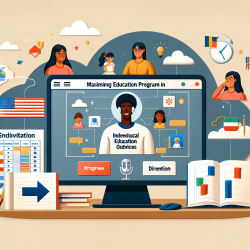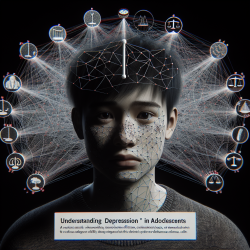Introduction
In the ever-evolving field of education, Social-Emotional Learning (SEL) is emerging as a pivotal component in shaping the future of our children. Recent research, including the article "Implementing Social-Emotional Learning in the Elementary Classroom," provides a data-driven blueprint for integrating SEL into the elementary curriculum. This blog explores how educators can harness these insights to foster better learning environments and outcomes for students.
The Case for SEL
SEL is not just a trend; it is a fundamental shift in educational priorities. According to a meta-analysis of 213 studies, SEL significantly boosts academic performance (Durlak et al., 2011). The integration of SEL with standards-based grading enhances students' ability to reflect on their learning and develop a growth mindset (Brennan, 2015). This dual focus on academic and emotional intelligence is crucial for holistic child development.
Implementing SEL: A Step-by-Step Guide
The research by Kaspar and Massey outlines a strategic action plan for implementing SEL in elementary schools. Here are the key steps:
- Form an SEL Leadership Team: Include diverse staff members to bring varied perspectives.
- Professional Development: Offer training sessions to help educators develop their own social-emotional competencies.
- Engage Stakeholders: Communicate regularly with parents, students, and community members to gain their support.
- Consistent Curriculum: Choose a research-based SEL curriculum that aligns with your school's needs.
- Data Collection: Use tools like the SAEBRS assessment to track progress and refine strategies.
Overcoming Challenges
Implementing SEL is not without its challenges. Time constraints, budget limitations, and stakeholder buy-in are significant hurdles. However, the research suggests that these can be mitigated through strategic planning and data-driven decision-making. For instance, integrating SEL into existing curricula can save time, while grants and government funding can alleviate financial concerns.
Real-World Impact
The case study from the research highlights a successful implementation of SEL, resulting in improved student behavior and academic performance. An administrator noted a decrease in behavioral issues and an increase in conflict resolution skills among students. This real-world example underscores the transformative potential of SEL when implemented effectively.
Conclusion
As educators, the responsibility to prepare students for a complex world is immense. SEL offers a pathway to equip children with the emotional and social skills necessary for success. By following the research-backed strategies outlined in "Implementing Social-Emotional Learning in the Elementary Classroom," educators can create nurturing environments that foster both academic and personal growth.
To read the original research paper, please follow this link: Implementing Social-Emotional Learning in the Elementary Classroom.










